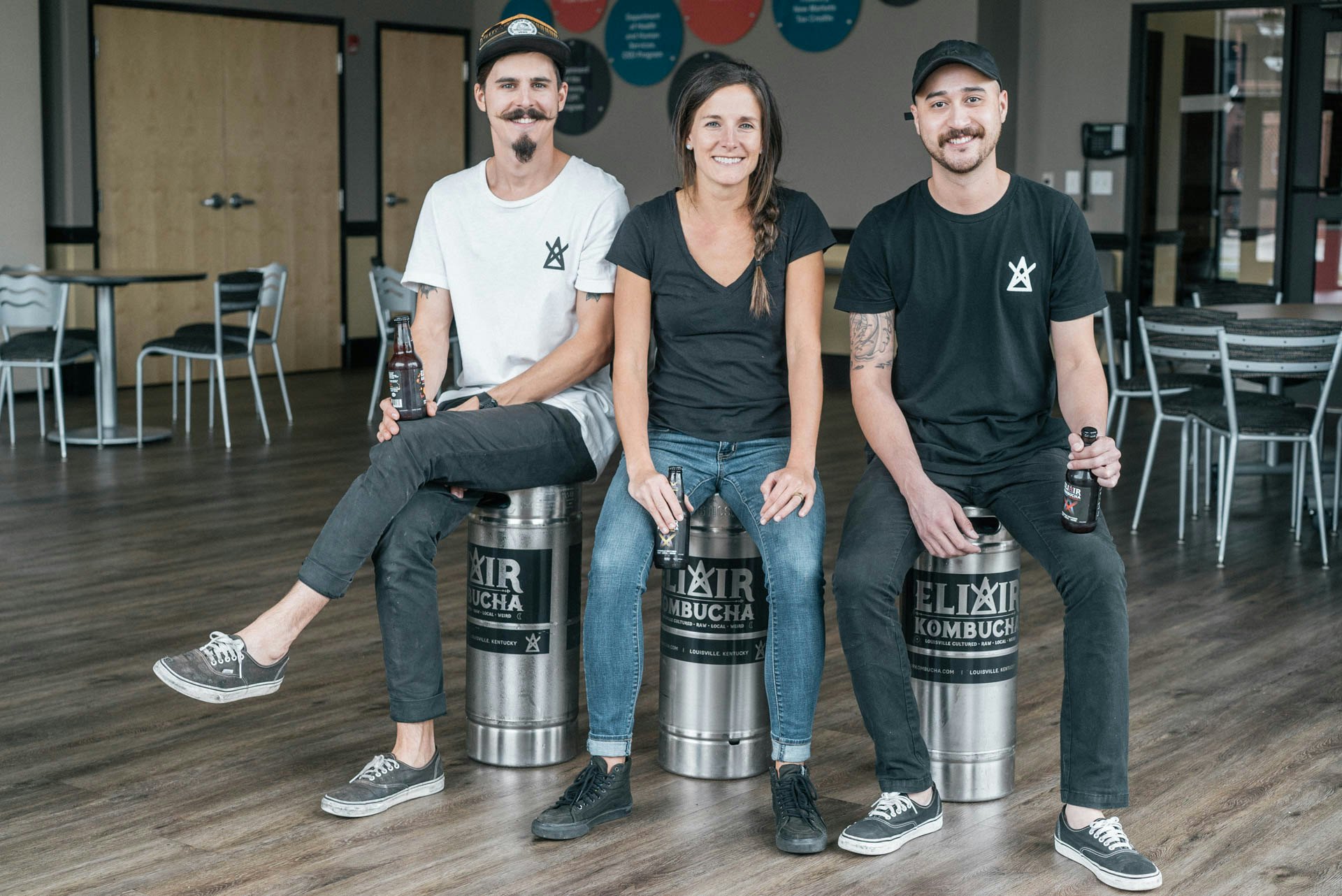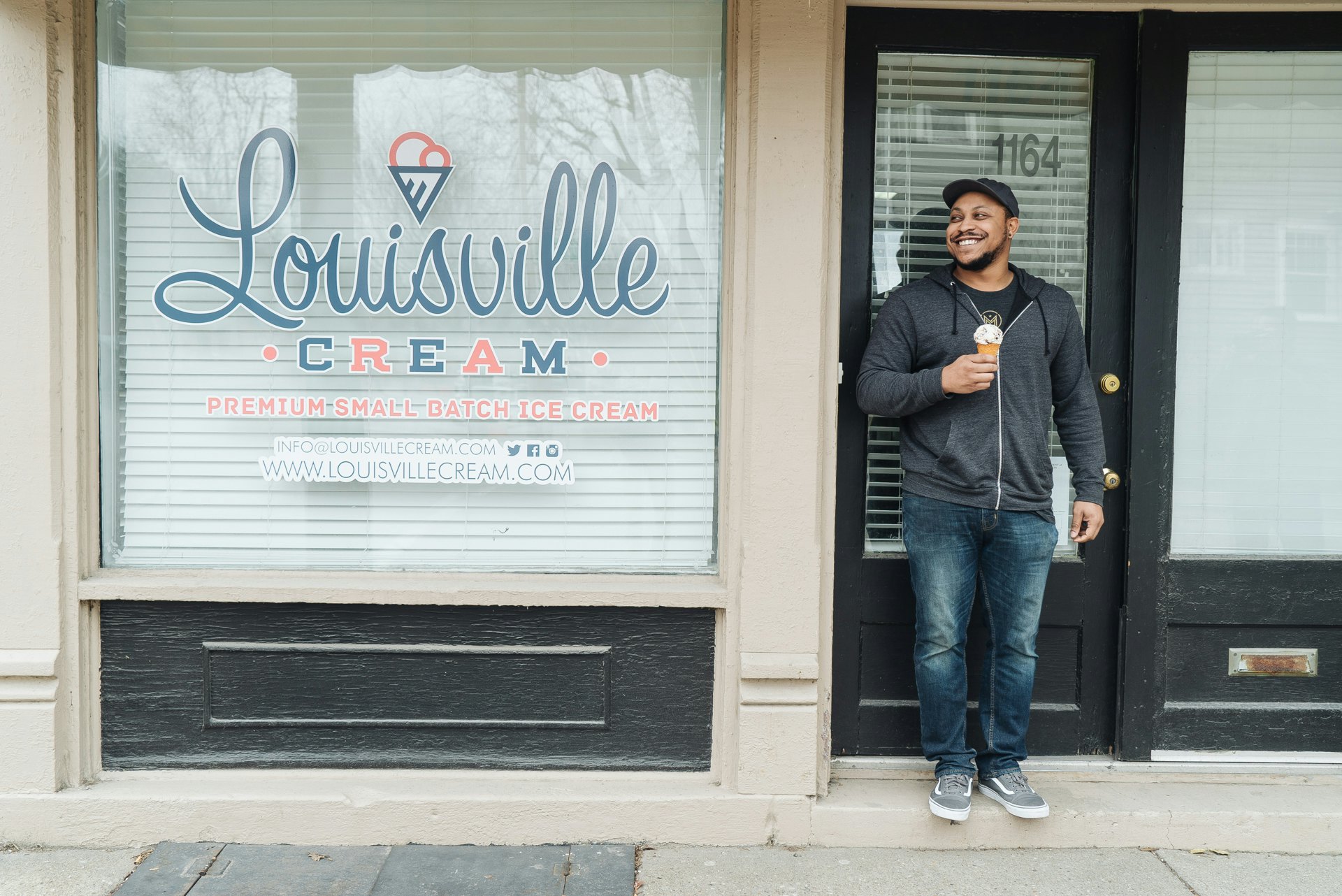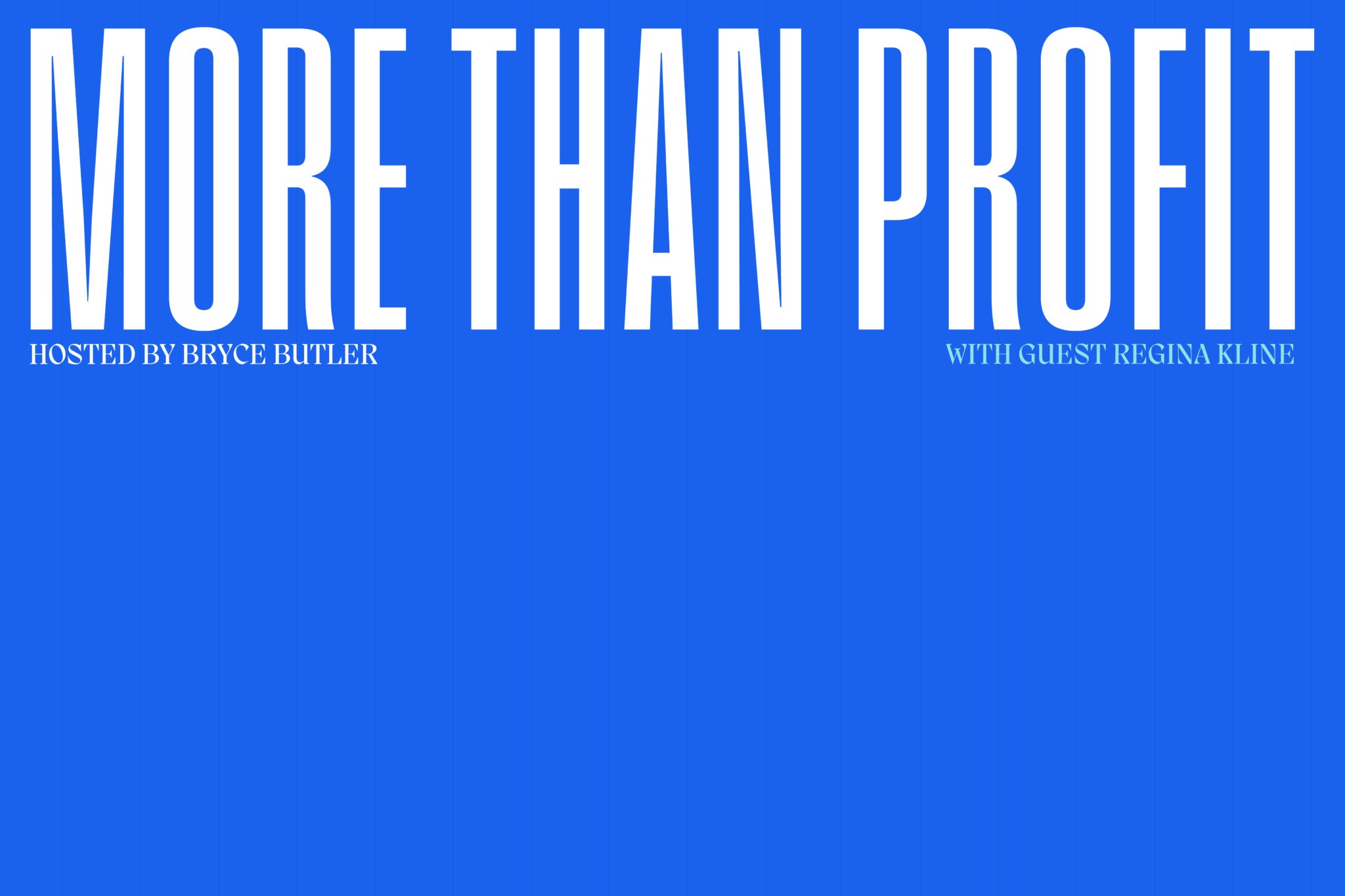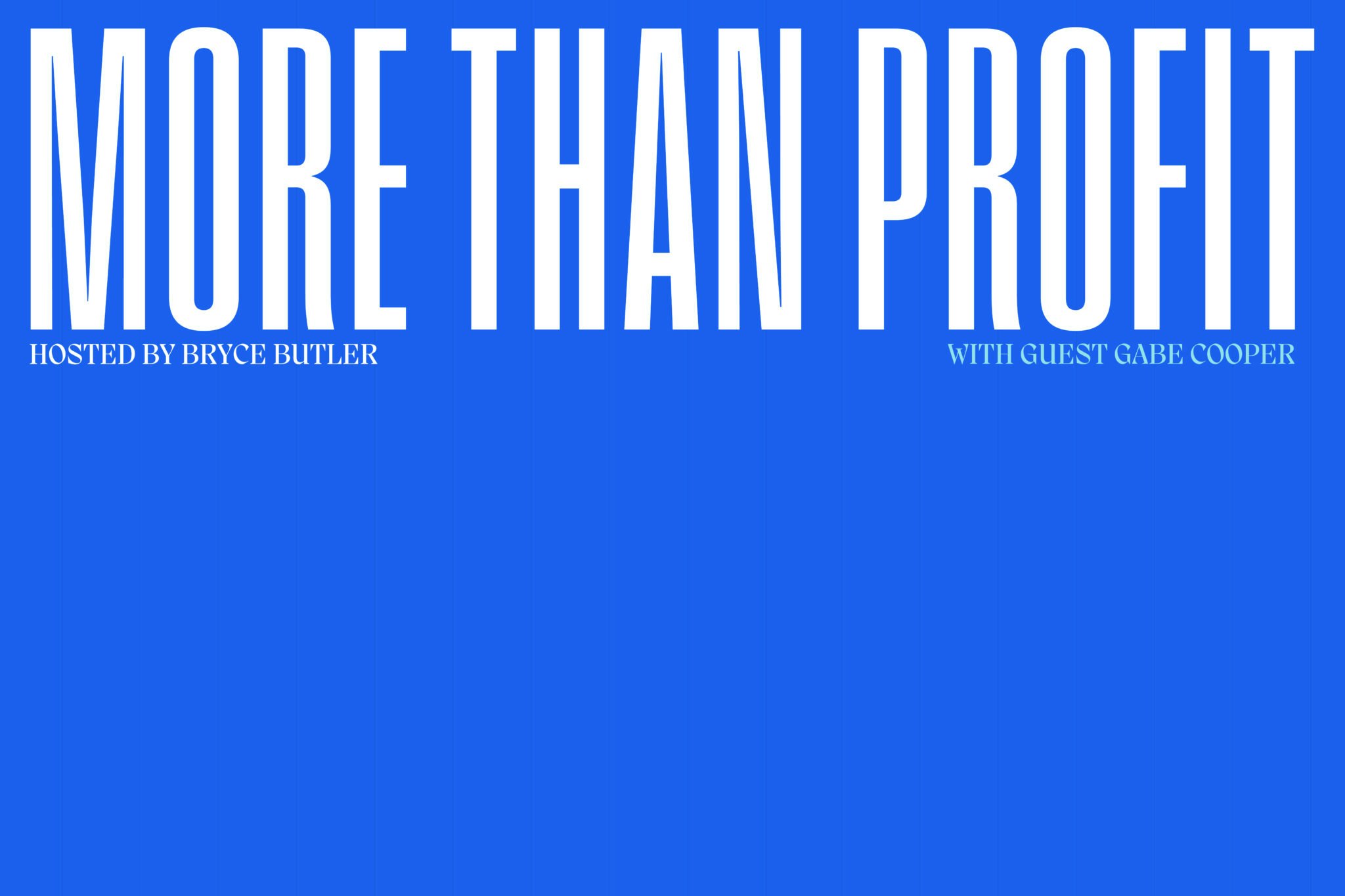Helping Entrepreneurs Grow Small Businesses
Starting the business from scratch was nearly impossible for Darryl Goodner, co-owner of Louisville Cream, a small-batch ice cream company that uses local grass-fed milk to make a unique flavors that rotate from month to month. He is one of many hard-working entrepreneurs struggling to identify adequate sources of capital to grow their business. Roughly 8,000 small businesses are denied traditional bank financing each day, and many are forced to borrow capital from online lenders with exorbitant APRs. Even though these entrepreneurs are proving that they’re able to grow successful businesses, the massive leap from startup to mainstream loan approval is a constant threat to their existence.
The Problem With Accessing Capital
Every day, these hard-working entrepreneurs struggle to identify adequate sources of capital. Small business owners are the unsung heroes of all of our communities and deserve a better solution that enables their business to flourish. While historical methods of evaluation should not be done away with, history has proven that evaluating small and large businesses, in the same manner, limits the flow of capital to these valuable components of our communities.
Small business lending has been stuck in a slow, grinding recovery behind most other types of business and consumer loans. It’s important to realize that while there are loan options that are marketed to small businesses, their underwriting standards often favor well established (often larger) businesses. This makes sense if you’re tasked with lending as much as possible while maximizing financial return, but leaves little room for less profitable small business loans. Strict regulations are limiting to an extent, but smaller loans will always be less profitable when reviewed in the same manner as larger loans. High costs associated with underwriting small business loans are a challenge for both mission-driven and for-profit banks alike.
Most commercial underwriting will consider several time tested and logical factors when seeking to eliminate as much risk as possible. For example, if a small business owner wishes to buy equipment they may be required to pay for at least 30% of the purchase before the remainder can be financed. When seeking a loan for something like working capital the same collateral requirement applies; however, there’s no asset tied to the loan to offer as collateral. This is where equity in other equipment, such as vehicles or real estate, is often the solution. To borrow $30,000 in working capital you must have $30,000 in acceptable collateral. This need for 30-100% collateral is only one of many challenges that small businesses are less able to overcome than their larger counterparts.


Unfortunately, the challenges these entrepreneurs face when accessing capital are misunderstood by many. When most Americans think about lending, they think in terms of mortgages, credit cards, and auto loans. There are so many mortgage options in the United States that not being able to qualify usually indicates a true lack of readiness for a mortgage. The same is not the case, however, for small business financing.
There’s also confusion when it comes to the need for microloan solutions in the US and what it takes to start a business. Most people who are familiar with microlending think of $500 loans to someone in a developing nation before they think of $30,000 loans to U.S. small business owners. The upper limit of what is considered to be a microloan in the United States is actually $50,000, and research by the Kauffman Foundation indicates that the cost to start a new business is estimated to be $30,000 or less. Thus, access to microlending is critical for small business growth.
The Problem With Current Lending Systems
If the future of lending is to be better, we must discover new underwriting methods that are rooted in a borrower up approach. Models that rely heavily on credit scores and financial collateral are proven, but they exclude too many successful business owners. The 2016 Small Business Credit Survey found that nearly half of (46%) businesses with less than $1 million in annual revenues are denied credit because of insufficient collateral or low credit score. Establishing a strong credit history for your business is challenging when a lack of history is limiting access. Small business growth is extremely critical to creating jobs and desirable communities. Greater opportunity for small business growth will only come out of a desire to continually discover new ways to lend, in addition to proven and established methods that are still very relevant for larger loan amounts.
When mainstream financing is not an option, personal savings or friend networks are often the next place an entrepreneur looks for the capital they need to launch. The stark reality, however, is that the wealth of those networks varies drastically. Countless studies confirm an unnerving gap in wealth between white and non-white, as well as men and women. While studies abound on the reasons for such gaps, we believe sustainable access to capital solutions can be achieved by utilizing common alternative assets that can be owned by anyone – a unique competitive advantage, practical strategies backed by reasonable evidence, character, planning, related experience, hustle, etc.

Unfortunately, the first wave of innovative and scalable microlending solutions have come with shackles attached. Online lenders are filling the void, but at what cost? These sites offer speed, convenience and relatively loose qualifications for a business loan, but in return you will likely pay a high annual percentage rate on the debt. As small-business owners consider options for working capital, they must carefully weigh the potential costs before taking on debt with APR’s that sometimes exceed 60%.
Our Solution To These Problems Is The Growth Loan
In response to the complex access to capital issues faced by so many small businesses, we created the Growth Loan. A non-collateralized, non-credit score based loan of up to $35,000 that leverages common alternative assets to offset risk. It was designed using the aforementioned “borrower up” method, as opposed to a “lender down” design. The opposite, lender down approach, starts with the need to deploy large amounts of capital as efficiently as possible due to the shareholders’ desire to maximize revenue. A borrower up approach focuses on cost management, access, recycling capital, and achieving positive returns.
Relying on common alternative assets makes the Growth Loan necessarily relational. Not relational in a token sort of way, but in the locking of arms that comes from mutual success. It looks beyond credit score and financial collateral by providing space and time for a thoughtful review of character and strategy. We guard against prioritizing our own profit by putting effort into terms that increase a borrower’s ability to repay and humanize the review process by requiring decision makers to meet with applicants rather than basing decisions solely on the numbers.

When loan amounts of less than $35,000 are appealing, a borrower typically has very little collateral to offer. The borrower up approach therefore excludes the use of traditional collateral, as does the Growth Loan. The creative use of common alternative assets has proven to be just as valuable as traditional collateral in many cases. What is more, over 60% of our loans have gone to either women or minority-owned businesses. An important stat considering some studies show lending to women and minorities totaling just over 25% of all conventional loans.
Greater opportunity will only come out of a desire to continually discover new ways to lend.
In addition to an alternative underwriting process, the Growth Loan leverages pre-existing community assets such as a volunteer loan committee with full authority to approve or deny borrowers, and technical assistance providers like the SBDC who are already working with hundreds of small businesses per year to improve their business model and support them in finding additional capital. Growth Loans are funded 100% by a revolving loan fund that began with $350,000. Since it’s inception, we’ve made more than $500,000 worth of loans through recycled funds.
The average APR on a Growth Loan is below market at 5%-7%. Non-collateralized online loan options are the closest comparison to the Growth loan, with rates well into the double digits. Local Community Development Finance Institutions (CDFIs) are able to offer larger amounts of capital at similar rates, but typically prefer more established businesses. While more flexible than mainstream lenders, there are only 2,000 CDFIs across the country and their funding varies from city to city.
Eighteen small businesses later, the potential economic activity created by the Growth Loan exceeds $1M. Without this unique borrower up approach, that same $1M would have been left on the table. There would be fewer jobs, less opportunity and less value creation for so many to enjoy.
We are excited to continue exploring, testing and deploying solutions that contribute to a more robust and inclusive capital system for entrepreneurs. If you have additional interest in the Growth Loan, we’d love to hear from you!



